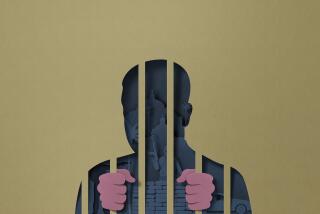Hair Fibers Linked to Camarena Case Suspect : Forensics: FBI expert testifies that the evidence found in the murder house matches samples taken from one of four men on trial.
- Share via
An FBI forensics expert testified Tuesday in Los Angeles federal court that hair fibers found in the house where U.S. drug agent Enrique Camarena was murdered matched hair samples taken from defendant Juan Ramon Matta Ballesteros’ head after his arrest.
Matta is one of four men being tried in Camarena’s abduction and murder. Matta, 45, contends that he was not at the house in Guadalajara, Mexico, where the agent was interrogated and killed in February, 1985.
FBI expert Michael Malone testified that the two hair fibers matched Matta’s in 20 separate characteristics and that there was no way in which they were dissimilar.
On cross-examination by Matta’s lawyer, Michael Burns, Malone ac knowledged that a hair sample is not considered the conclusive identifying evidence that a fingerprint is. Malone also acknowledged that every time he files a report on hair fiber tests, he includes a qualifying statement to that effect.
Still, the hair evidence could be considered significant by the jury, depending on the findings of a second expert that have not yet been revealed in court.
Earlier in the trial, Matta’s lawyers won the right to have another forensic expert compare the hair fibers using a technique that the defense expert considers more sophisticated than the process utilized by Malone.
Martin R. Stolar, Matta’s lead attorney, said his expert has examined the same hairs and his findings would be revealed “at the appropriate time.”
Malone testified all day about attempts made by various U.S. government agencies to secure whatever forensic evidence they could from the Guadalajara house where Camarena was tortured. The house was owned by Rafael Caro Quintero, a Mexican drug lord now imprisoned in Mexico after being convicted on charges stemming from the Camarena murder.
The FBI expert said U.S. officials were frustrated because by the time they got to examine the house--two months after the murder--the premises had been partially sanitized. He said walls in the house had been painted and he found it odd that other parts of the two-story house were still grimy.
Malone also testified that Mexican Federal Judicial Police prohibited U.S. Drug Enforcement Administration officials from completing their examination of the house and the adjoining outside area, after the DEA agents found a license plate that had been stripped from one of the cars used in Camarena’s kidnaping.
The witness said that after the bent license plate was found in a grate near a tennis court the Mexican police officials took considerably more interest in what the American officials were doing and telephoned their superiors at Judicial Police headquarters. After that call, Malone said, the Mexican police prevented the U.S. agents from further examining the house and seized the license plate. Malone said, however, that the U.S. officials were permitted to photograph the license plate.
Despite these frustrations, Malone said, the FBI was able to gather up considerable forensic evidence at the house, including hairs that matched known hairs of Camarena and other persons indicted in the case--including Sergio Espino Verdin, the Mexican police official who has been identified as one of the principal interrogators of Camarena.
In other developments Tuesday, Stolar debated with prosecutors on whether the government should be compelled to provide documents and records about any relationship between Matta, co-indictee Miguel Angel Felix Gallardo and any agencies of the U.S. government.
The defense lawyer asserted that there is a 1987 DEA report stating that Felix and Matta had arranged with U.S. officials to engage in arms smuggling and drug smuggling in aid of the U.S.-backed Nicaraguan Contras.
Federal prosecutors Manuel Medrano and John Carlton have denied that any such report exists. In court papers, they have asserted that Stolar is engaged in a fishing expedition and that, in any case, such a report would have no relevence to the murder case.
Stolar countered by saying that he has subpoenaed the report because it would prove that the alleged racketeering charges in the indictment against his client did not violate federal laws, “because they were sanctioned, approved and authorized by the United States government.”
U.S. District Judge Edward Rafeedie said he would rule on the motions shortly.
The lawyer for defendant Javier Vasquez Velasco also charged that the government had withheld information that could help exonerate his client. Rafeedie said he would rule on that issue after he receives the government’s reply.
In a surprising announcement, prosecutors said they expected to call only four more witnesses and could wrap up their case by the end of the week.
More to Read
Sign up for Essential California
The most important California stories and recommendations in your inbox every morning.
You may occasionally receive promotional content from the Los Angeles Times.













